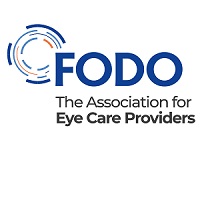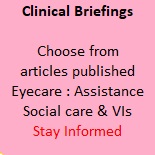Professional Matters Optometry & Dispensing
Atlas of variation in risk factors and healthcare for vision in England
Atlas of variation in risk factors and healthcare for vision in England

Public Health England (PHE) has published their Atlas of variation in risk factors and healthcare for vision in England. Working with a range of clinicians, public health analysts and stakeholders, including the Clinical Council for Eye Health Commissioning1 (CCEHC); this is the first health intelligence output from PHE solely focused on eye health.
Using the Portfolio of Indicators for Eye Health and Care (CCEHC SAFE metrics) as a guide, the Atlas brings together 32 indicators across the whole vision pathway from describing populations at risk of poor eye health, through screening to healthcare services, and eye health outcomes. The indicators are drawn from the best available population level data sources, and the Atlas addresses a long recognised gap in regular review and reporting of eye health data arising from routine NHS care.
New analyses of hospital eye services including outpatient appointments, intravitreal injections, cataract and retinal detachment surgery, are presented revealing local and regional variations that to date have remained unrecognised. In doing so, the Atlas has:
• highlighted and quantified variations across a range of eye health indicators that will be hard to overlook, and deserve closer local review and scrutiny to understand their underlying causes and outliers
• called for making better use of existing data sources and improving their quality
• highlighted the lack of routinely available, granular data from services provided in primary eye care and the need to ensure that is addressed.
Access to the data underpinning the indicators is available through the Interactive Atlas, an online tool to support review and interpretation of local variations in health service indicators, and prevalence of risk factors for poor vision health.
Chair of the CCEHC, Parul Desai said:
“The Atlas is timely, presenting trends in the years immediately prior to, and provisional data during the coronavirus (COVID-19) pandemic, as a resource to support planning and monitoring the impact of actions taken by clinicians, CCGs, ICSs, providers and policy makers locally, and by the National Eye Care Restoration and Transformation Programme.
“It should not be seen as a one-off, but as a starting point for local discussion and action. It will be a significant tool to help monitor population eye health and its contributory factors. Practical options for action are proposed that could make meaningful differences to patients, and the quality, accessibility and consistency of care provided by eye health services – now and in the longer term.”























